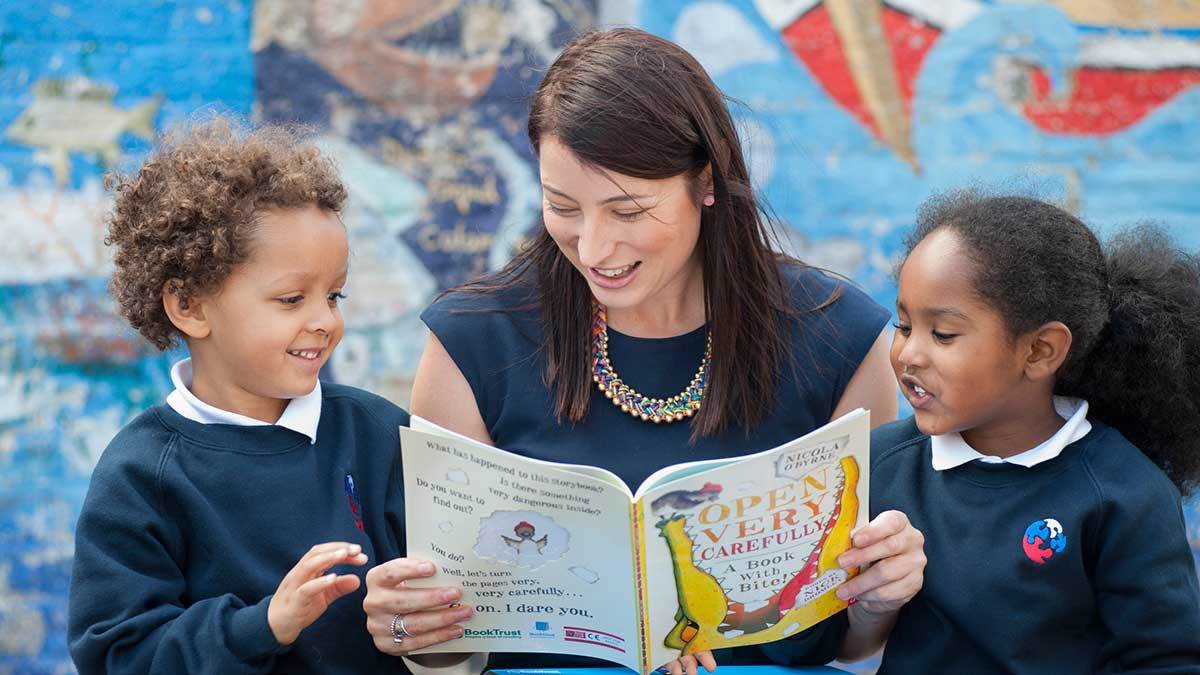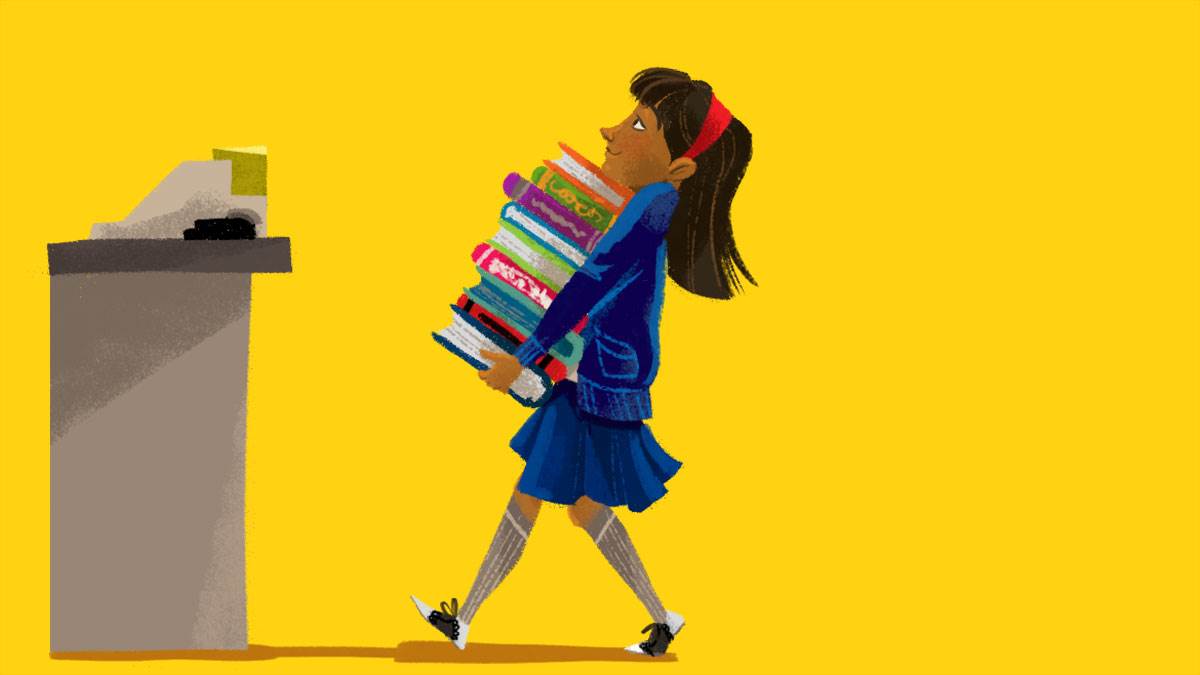A teacher's guide to getting to know your class's reading habits
Published on: 03 September 2023
Scott Evans, the Reader Teacher, shares some easy ways you can connect with your pupils through reading.

As a new school year begins, it's a perfect time for teachers to connect with their classes. One important task is getting to know their reading habits. Finding out what they like to read, how often they read and why they read can help you teach in a way that sparks a lifelong love for reading right from the start.
In this article, we'll explore some simple ways to get to know your children as readers. We'll talk about using surveys and provide you with a questionnaire you can use to learn more about them.
The importance of understanding reading habits
Understanding the reading preferences of your children goes beyond just curiosity; it's a strategic approach to enhance the reading experiences for both children and teachers alike.
By getting to know children as readers, teachers can:
- Make It Personal: Every child is unique and their reading interests can vary widely. Knowing what they like gives you the power to be more bespoke in your suggestions of books they'll enjoy. Not only does this make reading more fun, but it also helps you connect better with them.
- Get Them Excited: When children read things they're interested in, their engagement and motivation to read naturally flourish. Connecting them with books that are close to their hearts can also show you a side of them you haven't seen before.
- Create a Classroom Community: When children like what they read, they can’t wait to talk about it with others. This atmosphere transforms reading into a social and shared experience.
- Identify Struggling Readers: Some children might need extra help with reading. Knowing their reading habits helps you find who might be struggling and give them the targeted support they need.
Reading Surveys
Start by using reading surveys to understand your children as readers. These involve asking questions about the books they like, authors they enjoy, genres they prefer and even the people who inspire their reading choices. Encouraging honest answers can raise your awareness of aspects about their reading that might otherwise stay hidden.
Typically done at the start of the school year, you could also carry out ‘check-ins’ at different points throughout the year, such as the end of each term, to effectively track ongoing trends.
Sample Reading Survey
We've designed a reading survey template that's ready to use in your classroom. It covers a range of topics like where and when children like to read and how reading makes them feel. You can view the template below and download it as a document to print. Feel free to use it as it is or make changes to fit what you want to find out.
Download and print the questionnaire: My Reading Survey
Please take a few minutes to answer the following questions and statements to help your teacher understand your reading preferences better:
- What do you like to read and why? (For example: fantasy, mystery, adventure, non-fiction, poetry, picture books, graphic novels, etc.)
- Who is your favourite author, illustrator or poet? What do you enjoy about their work?
- How often do you read for pleasure? (Options: all the time, sometimes, rarely, etc.)
- Where do you usually read? (Options: at home, in the library, in the classroom, etc.)
- How do you choose a book to read? (Options: cover, blurb, recommendations, etc.)
- Do you prefer reading alone or with someone else? Why?
- How do you feel when you read?
- What is the last book you read and what did you enjoy about it?
- Are you a member of a local library?
- I would read more if…
- If I could change one thing about reading in my classroom/school, it would be…
- Draw a picture that represents you or shows something about you as a reader.
If you're thinking about making your own reading survey from scratch or customising our existing one, there are a few important things to consider:
- Question Types: Mix it up by using multiple-choice questions for specific preferences (i.e. favourite genres) and open-ended questions for more in-depth responses (i.e. when providing reasons).
- Length: Keep the survey concise as children might lose interest if it's too long. Focus on essential questions that provide the insights you need.
- Emotions and Experiences: Include questions about how reading makes them feel and any memorable reading experiences they've had to provide a deeper understanding of their relationship with reading.
- Flexibility: Consider adding a few optional fields for children to write about anything else related to reading that the survey might not cover.
After using the survey, take a moment to evaluate its impact and analyse the findings for potential patterns. Did the survey provide the desired insights? Were there any questions that provided less valuable information? Use this feedback to refine the survey for future use.
 Illustration: Erika Meza
Illustration: Erika Meza
Other strategies for getting to know your class' reading habits
Using reading surveys is just one way to get to know your children as readers. Here are some more ideas:
- Reading Journal: Create a journal for the whole class to join in and share their reading experiences! Record the books they’ve read, their thoughts and reflections and, if they like, draw pictures of their favourite characters and scenes.
- Book Shares: Allocate time for children to share their thoughts about books they're reading with the class in different ways from oral presentations to creatively designed posters. This promotes peer recommendations and reveals different perspectives on reading.
- Reader Profiles: Ask children to create individual reader profiles for themselves that include their reading histories and preferences which they can continuously update as you progress throughout the year.
Conclusion
Understanding your children's reading habits is a journey that takes time. By using different methods and the survey we’ve provided, you'll uncover invaluable insights not only into their reading preferences but also into their individual personalities. Besides the immediate effects you’ll gain, this is also an investment in them that will ultimately help you create a more engaging and rewarding reading experience for each child in your class.
Scott Evans is a primary school teacher, reading for pleasure adviser and author of 100 Ideas for Primary Teachers: Reading for Pleasure (Bloomsbury), in which you can find many more ideas such as Reading Surveys to create and continue a reading for pleasure culture in your school. Follow him on social media @MrEPrimary or @TheReaderTeacher.
The Bookfinder
Our Bookfinder will help you discover the very best kids' books: magical mysteries, astonishing adventures and fantastic facts. Simply choose an age range, pick as many themes as you want to search through thousands of book reviews, and get reading.
What to read after...
We've put together top recommendations and suggestions – from librarians, teachers, parents, and more – for fans of some of the biggest book series and authors. So whether it's Spot the Dog or Jacqueline Wilson, we've got ideas about where to turn next.







